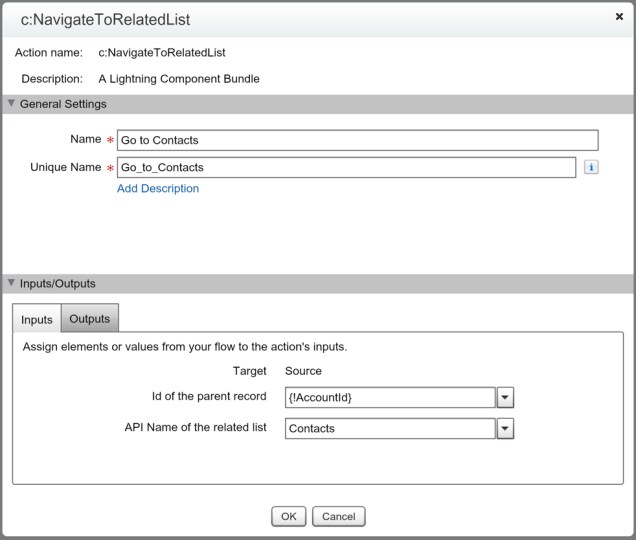Previous blog entries on my site (and many others) demonstrate the crazy workarounds that we had to utilize to redirect Users to a specific page after they complete a Visual Flow. Now, we’ve got a few different options available to us through the Unofficial Flow site that Alex has been maintaining and adding to. If for whatever reason you’re not yet following Alex and keeping up-to-date on all of the new items getting released on the site, this is a friendly PSA to do so. Now, let’s get into the meat of this post… what our options are for redirecting Users.
The prerequisite for this, is you need to install the correct package (which is linked in each option). I expect in either Spring ’19 or Summer ’19 that one or all of these will be natively available to us in Flow. Currently, there are three main options for redirecting a User in Flow:
Load Web Page
This is my favorite of the three options currently available to us. This one does take a bit more work compared to the others, as you need to use a Custom Setting or something similar to

The way this was built, you’ll see an Output option that you are prompted to fill out. You’ve just sent the End User to another page, so they’re not inside the Flow anymore. However, the Flow will continue to go down it’s path without the User. Assuming there are no errors, you can add in additional logic after the redirect takes place, and knowing where they were sent to can potentially be apart of your decision making of any updates to do post-redirect. This also assumes that no Screens requiring Input are after the redirect.
If you’re looking to redirect someone to a non-Salesforce URL, keep in mind the browser settings can impact how this experience happens (some might have a prompt).
Navigate to Salesforce Record (SObject)
This is what we’ve been waiting for the longest. The majority of the URL redirects have been to send someone to a newly created record, instead of having them redirected back to where they came from. This action just asks for the record ID and then sends you there. One of the best parts of this action is how simple it is. You don’t have to worry about the rest of the URL, that is taken care of for you! Simply throw the record ID in and you’re done.

Navigate to Related List
The nice part of this, just like the Navigate to Salesforce Record component, is you don’t need to worry about the URL, just the API Name of the Related List and Record Id that you want to navigate to.

You can find the API Name of the Related List through either the Lookup Field on that Child Object or through the URL (my preference)

Recap: We now have multiple ways to redirect a User inside a Flow. This opens up the possibility for many cool solutions where we can guide Users in our Org to any record or page without any use of code. Let the customization begin!